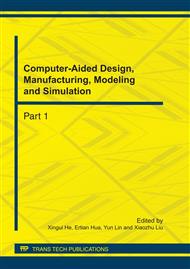p.225
p.230
p.236
p.240
p.244
p.250
p.259
p.264
p.269
Modeling and Simulation of an Improved Measure of MPPT in Photovoltaic System
Abstract:
Intermittent scan tracking (IST) is a maximum power point tracking (MPPT) method of photovoltaic system. The scanning approach of this method generally is order scanning. But this scanning mode has the weaknesses of the huge storage space and excessive amount of calculation. To eliminate these defects, this paper proposes a new scanning mode, i.e. nested scanning. To verify the effectiveness of the proposed method, a simulation system was modeled based on Matlab/Simulink. In the experiment two scanning modes above were compared and the simulation results proved that, on the premise that the accuracy of results is guaranteed, nested scanning mode can effectively decrease the quantity of required scanning voltages and currents, reduce the amount of calculation and improve the scanning efficiency.
Info:
Periodical:
Pages:
244-249
Citation:
Online since:
August 2011
Authors:
Price:
Сopyright:
© 2011 Trans Tech Publications Ltd. All Rights Reserved
Share:
Citation:


